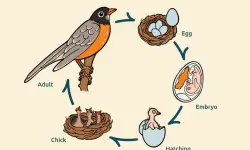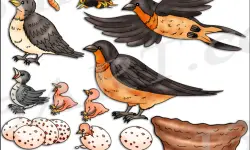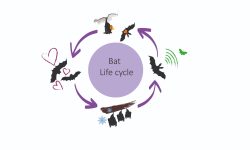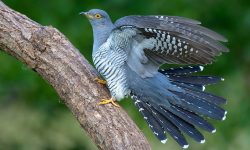Texas, with its vast and varied ecosystems, serves as a haven for hundreds of bird species—including some of the most intriguing members of the cuckoo family. While cuckoos are often associated with their secretive nature and distinctive calls, not all cuckoos behave the same. In fact, Texas hosts a surprising variety of them, from shy forest dwellers to bold desert runners. This guide explores the seven cuckoo species officially recorded in Texas, their habitats, behaviors, and where to find them.
What Makes a Bird a Cuckoo?
Birds known as cuckoos belong to the family Cuculidae, which includes a range of species with diverse lifestyles. Some, like the famous Old World cuckoos, are known for brood parasitism—laying eggs in other birds’ nests. However, many North and South American cuckoos raise their own young. Cuckoos are typically slender birds with long tails, zygodactyl feet (two toes forward, two back), and elusive habits. In Texas, these birds range from tree-dwelling insectivores to ground-dwelling desert runners.
1. Yellow-billed Cuckoo (Coccyzus americanus)
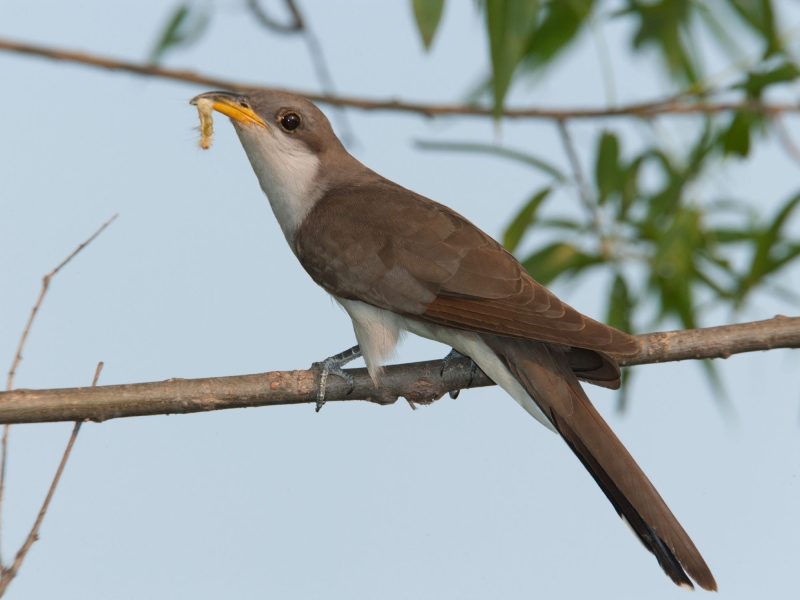
Widespread Summer Breeder in Texas Woodlands
The Yellow-billed Cuckoo is the most commonly observed cuckoo species in Texas, particularly during its breeding season, which spans from late spring through early fall. It is a medium-sized, slender bird characterized by its long tail with bold white spots, cinnamon underwings, and a distinct yellow lower mandible—features that aid in field identification. This species is acoustically notable for its hollow, guttural “ka-ka-ka-ka-kow-kow-kowlp” call, often delivered from concealed perches deep within the canopy.
Habitat and Ecological Preferences
In Texas, C. americanus shows a strong preference for deciduous riparian corridors, mature bottomland hardwood forests, and shrubby margins of wetlands. Its distribution correlates with the availability of dense foliage that provides cover for foraging and nesting. The species is highly insectivorous, feeding on large prey such as caterpillars, cicadas, katydids, and beetles, which it gleans from leaves and branches with deliberate movements.
Breeding Biology and Migratory Timing
This cuckoo is a long-distance migrant, wintering in South America and arriving in Texas typically between late April and June. Nesting occurs in well-concealed sites within shrubs or small trees, where the female lays a small clutch—usually 2 to 4 eggs—in a loosely constructed platform of twigs. Both sexes participate in incubation and chick-rearing.
Notably, the Yellow-billed Cuckoo is sometimes referred to colloquially as the “rain crow,” a name rooted in folklore linking its vocalizations to impending storms. This nickname may reflect the bird’s increased calling activity during periods of shifting barometric pressure, although empirical support for a direct meteorological correlation remains limited.
2. Black-billed Cuckoo (Coccyzus erythropthalmus)
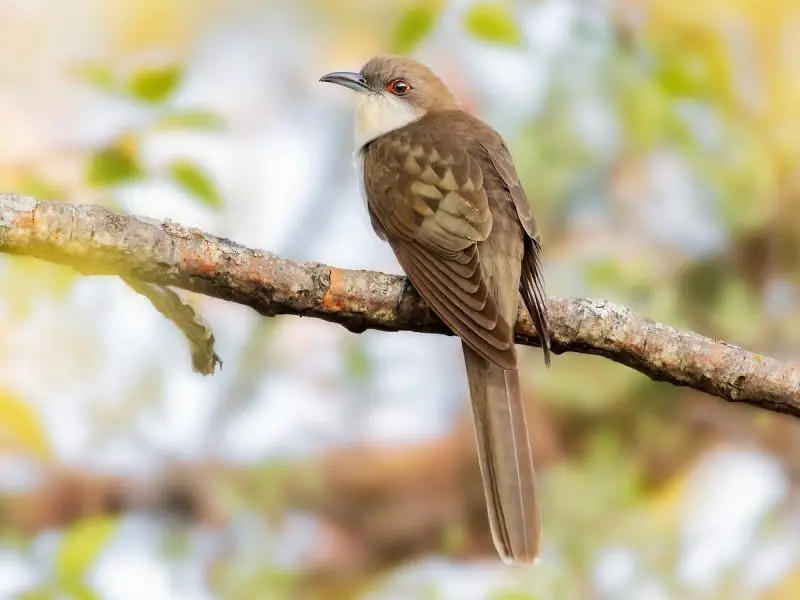
An Elusive Migrant in Texas Woodlands
The Black-billed Cuckoo is an uncommon and secretive passage migrant in Texas, occurring primarily during the spring and fall migration periods. Its core breeding range lies across the northeastern and upper midwestern United States, but individuals occasionally pass through Texas en route to or from breeding territories. Due to its shy, retiring nature and preference for dense understory vegetation, this species is easily overlooked despite its presence.
Habitat and Migration Patterns
In Texas, C. erythropthalmus is typically encountered in riparian corridors, mature woodlands, and thick shrubby areas during migration stopovers. It shows a strong association with damp, insect-rich habitats, often favoring areas with a closed canopy and low human disturbance. The species winters in northern South America, undertaking long-distance nocturnal migrations that make its Texas appearances fleeting and sporadic.
Morphological Characteristics and Vocalizations
This species is best identified by its slender, uniformly brown upperparts, white underparts, and entirely black bill. A distinguishing feature is the red orbital ring, which contrasts subtly with its otherwise muted plumage. Compared to the Yellow-billed Cuckoo, the Black-billed Cuckoo has shorter undertail white spots and a more cryptic appearance.
Its vocalizations consist of a soft, repetitive “coo-coo-coo,” typically given from within dense cover. The call is low-pitched, lacks the sharp inflection of the Yellow-billed Cuckoo, and is often the only clue to its presence. These subdued vocalizations and inconspicuous behavior contribute to its status as one of the more challenging North American cuckoos to detect in the field.
3. Mangrove Cuckoo (Coccyzus minor)
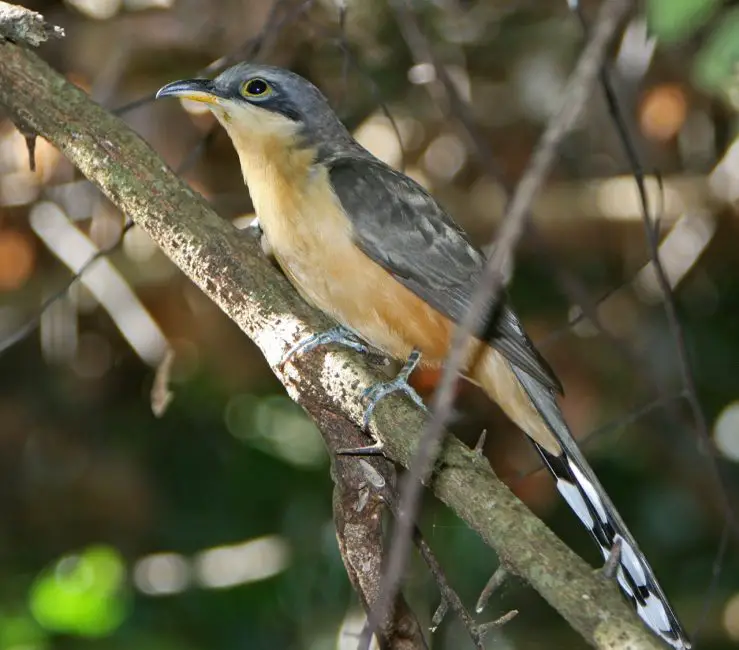
A Rare Neotropical Vagrant in Texas
The Mangrove Cuckoo is an infrequent and highly localized visitor to Texas, with only a limited number of confirmed records—primarily from the extreme southern coastal regions such as the lower Rio Grande Valley. This species is considered a vagrant in the state, and its presence typically sparks considerable interest among birders due to its rarity and specialized ecological niche.
Native Range and Habitat Specialization
Co. minor is primarily distributed along coastal areas of the Caribbean, southern Florida, the Yucatán Peninsula, and parts of Central America. It is ecologically specialized, exhibiting a strong fidelity to dense coastal mangrove forests, especially those dominated by red mangrove (Rhizophora mangle). These habitats offer both protective cover and abundant arthropod prey, including large insects, spiders, and small lizards.
Texas lies well outside the species’ regular breeding or wintering range. Therefore, individuals recorded in the state are presumed to be dispersing post-breeding wanderers or storm-driven strays. Because of this, it is classified as a vagrant species rather than part of the regular avifauna.
Field Identification and Behavior
The Mangrove Cuckoo closely resembles other members of the Coccyzus genus but can be distinguished by its distinctive black facial mask, bold buffy underparts, and a longer, more downcurved bill. The upperparts are grayish-brown, and the tail feathers display the characteristic white spotting typical of North American cuckoos.
Its vocalizations include a series of harsh, nasal notes—typically rendered as “gawk-gawk-gawk-gawk”—which can carry over considerable distance in coastal thickets. Despite this, the species often remains concealed in dense vegetation, making visual confirmation challenging even when calling nearby.
4. Groove-billed Ani (Crotophaga sulcirostris)
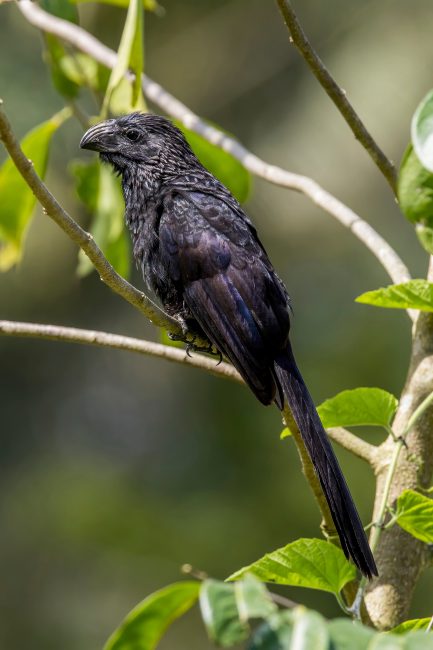
A Gregarious Cuckoo of South Texas Scrublands
The Groove-billed Ani is a distinctive member of the cuckoo family (Cuculidae), notable for its gregarious behavior and unique social structure. Unlike most cuckoos, which are secretive and solitary, this species is highly social and typically encountered in small flocks. In Texas, it is primarily a summer resident, with regular occurrences concentrated in the brushlands and open fields of the Rio Grande Valley and adjacent southern regions.
Morphology and Behavior
This species is immediately recognizable by its uniformly glossy black plumage, exaggeratedly long tail, and laterally compressed, deeply grooved bill—a feature that gives the species its common name. Its body proportions and behavior are quite unlike most North American cuckoos, resembling more closely those of a small corvid in both appearance and activity.
Groove-billed Anis are highly vocal birds, producing a variety of harsh, squeaky, and chattering calls that serve both social and territorial functions. These vocalizations, often described as “wheezy squeals” or “grating churrs”, are used to maintain contact within foraging groups and during cooperative breeding interactions.
Habitat Preferences and Seasonal Presence
In Texas, the Groove-billed Ani occupies open scrublands, overgrown pastures, and edges of agricultural lands—especially areas dominated by mesquite (Prosopis spp.), huisache (Vachellia farnesiana), and other thorny vegetation. It is a tropical and subtropical species, and in the United States, it is limited to the southernmost parts of Texas during the warmer months, typically arriving in late spring and departing by early fall.
Cooperative Breeding and Nesting Behavior
Among the most remarkable aspects of C. sulcirostris biology is its communal nesting system. Several breeding pairs may contribute to a single nest, typically constructed as a bulky cup of twigs and grasses placed low in shrubs or trees. Females lay eggs into the shared nest, often over a span of several days. Incubation and chick-rearing duties are likewise shared among multiple adults, a rare strategy among cuckoos and an adaptation believed to enhance reproductive success in unpredictable environments.
This cooperative breeding system, combined with the ani’s social lifestyle, sets it apart not only from other cuckoos but from most North American passerines as well.
5. Smooth-billed Ani (Crotophaga ani)
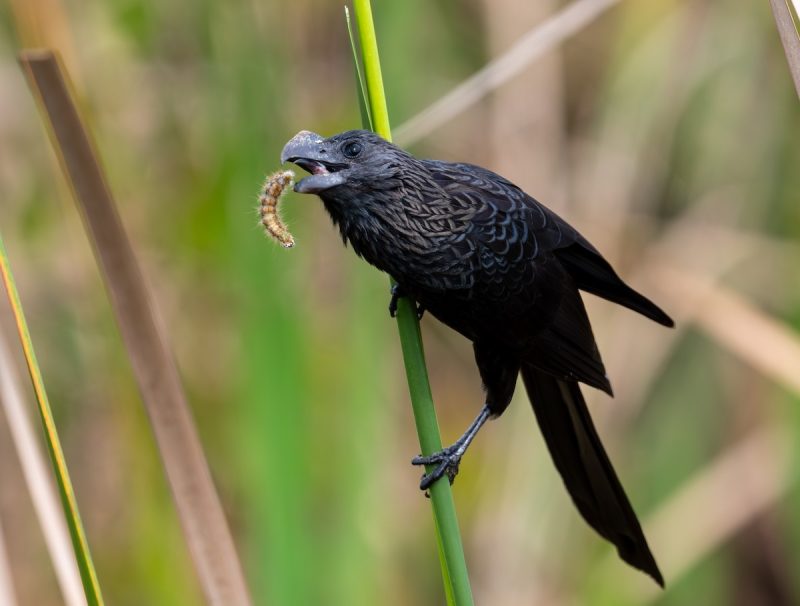
A Rare Neotropical Wanderer in Texas
The Smooth-billed Ani is a tropical member of the cuckoo family that occurs only rarely in Texas, with sightings limited to stray individuals, typically in the southernmost parts of the state or along the Gulf Coast. Its presence is considered casual and highly localized, with most observations involving single birds found in suitable brushy or coastal habitats. Compared to the Groove-billed Ani, which breeds annually in southern Texas, the Smooth-billed Ani is much less frequent and is classified as a vagrant in the state.
Identification and Distinguishing Features
Morphologically, the Smooth-billed Ani resembles its close relative, the Groove-billed Ani (C. sulcirostris), but can be distinguished by the structure of the bill. As its name suggests, the upper mandible of C. ani lacks the pronounced grooves found on the bill of the Groove-billed Ani, appearing smoother and more arched. Additionally, the Smooth-billed Ani has a slightly bulkier build, a more domed forehead, and a deeper, more resonant voice.
Like other anis, this species is entirely black with a purplish or bluish gloss in good lighting. Its vocalizations include loud, descending whistles and low hooting notes that carry well in open habitats.
Native Range and Status in Texas
The Smooth-billed Ani is primarily a resident of the Caribbean Basin, including southern Florida, Cuba, Puerto Rico, the Lesser Antilles, and northern South America. It favors humid lowland habitats, open pastures with scattered shrubs, and coastal thickets. In the United States, it is regularly found only in southern Florida, where small breeding populations persist.
In Texas, verified records are sparse and often occur after tropical weather systems or during irregular dispersal events. Most individuals are observed by experienced birders and are sometimes documented with photographs due to the challenge of distinguishing this species from its more common cousin. Because of the rarity and unpredictability of its appearances, the Smooth-billed Ani remains a prized species on Texas birding checklists.
6. Greater Roadrunner (Geococcyx californianus)
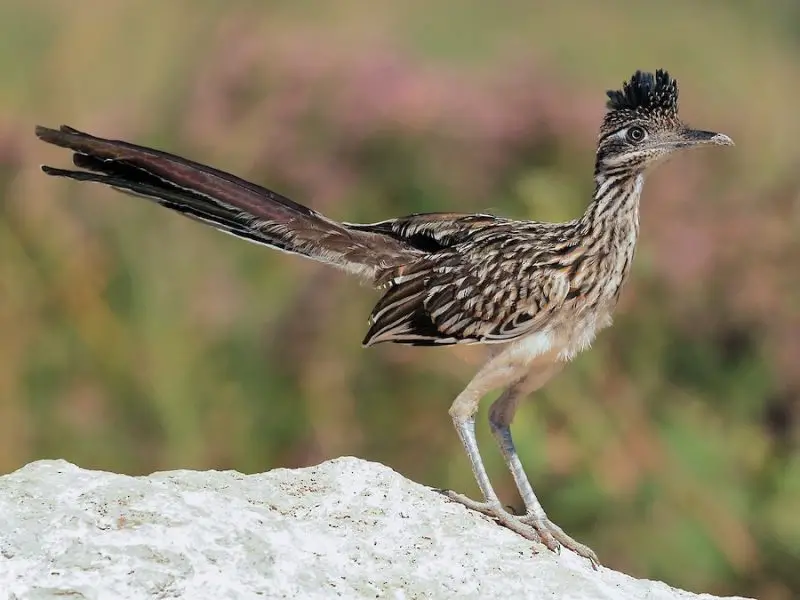
A Charismatic Ground-Dwelling Cuckoo of the American Southwest
The Greater Roadrunner stands as the most iconic and easily recognized member of the cuckoo family in Texas. Unlike the arboreal cuckoos of eastern forests, this species is highly terrestrial and has become a symbol of the arid landscapes of the American Southwest. Found throughout central, western, and southern Texas, the Greater Roadrunner occupies dry scrublands, mesquite flats, desert margins, and open grasslands, often near rocky outcrops or sparsely vegetated terrain.
Morphology and Field Marks
G. californianus is a large, long-legged cuckoo with a distinctive crest, heavily streaked plumage, a long graduated tail, and a decurved bill. Its cryptic coloration blends well with the desert and chaparral environment, but its bold behavior and upright stance make it conspicuous when moving. When excited or displaying, it may raise its crest and flash the bare blue and red skin behind the eye—features used in both territorial signaling and courtship.
Behavior, Locomotion, and Diet
Unlike most cuckoos, the Greater Roadrunner is adapted for high-speed terrestrial locomotion. Its strong legs and zygodactyl feet enable it to sprint at speeds exceeding 20 miles per hour (32 km/h), a critical adaptation for chasing down fast-moving prey. Though capable of short, gliding flights, it prefers to run and rarely takes to the air unless necessary.
This species is an opportunistic predator with a broad and carnivorous diet. It preys on insects, arachnids, lizards, small snakes (including rattlesnakes), amphibians, rodents, and occasionally small birds. It uses a combination of stealth and bursts of speed to ambush prey, often subduing larger victims by striking them repeatedly against hard surfaces. Roadrunners have also been observed caching food or using their wings to create shade while hunting in exposed environments.
Reproductive Ecology and Residency
The Greater Roadrunner is a year-round resident in Texas. It nests in low shrubs, cacti, or small trees, building bulky stick nests lined with grasses, feathers, and even snake skins. Both male and female participate in incubation and chick-rearing. This species often breeds early in the season, sometimes as early as February or March in southern Texas.
As a uniquely North American cuckoo that diverges behaviorally and ecologically from its tree-dwelling relatives, the Greater Roadrunner exemplifies the evolutionary plasticity of the Cuculidae family. Its speed, intelligence, and adaptability make it a compelling subject for both scientific study and cultural fascination.
7. Lesser Roadrunner (Geococcyx velox)
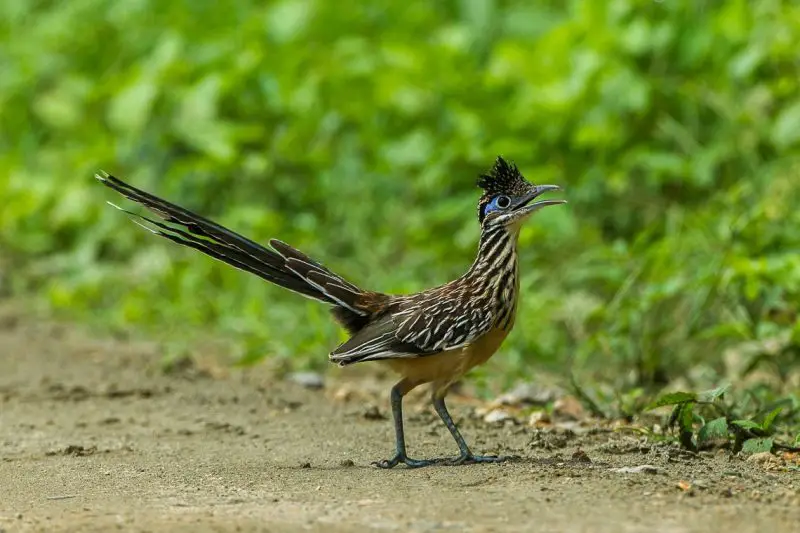
A Rare and Elusive Visitor from the South
The Lesser Roadrunner is a terrestrial cuckoo native primarily to Mexico and Central America, with a distribution that extends from northern Mexico through Guatemala and into western Honduras. In Texas, this species is considered an accidental or vagrant visitor, with only a handful of confirmed records—mostly from the southern borderlands near the Rio Grande, particularly in Starr and Hidalgo counties. These rare occurrences place it among the most coveted sightings for birders in the region.
Morphological Characteristics and Comparison
G. velox is superficially similar to the Greater Roadrunner (G. californianus), but it is noticeably smaller, slimmer, and lighter in build. It has a shorter tail and slightly finer bill, and its overall plumage is paler with less contrasting streaking. The bare skin behind the eye is often less vividly colored than that of its larger cousin, and its crest is more modest. Due to these subtle differences, distinguishing between the two species requires careful observation, especially in areas where the Greater Roadrunner is common.
Habitat and Behavior
In its native range, the Lesser Roadrunner occupies arid to semi-arid environments, including thorn scrub, desert grasslands, and dry woodlands—habitats that are ecologically similar to those found in South Texas. Like its northern relative, it is primarily ground-dwelling, built for running rather than sustained flight. It feeds on a similar diet of insects, small reptiles, amphibians, and other small vertebrates, using stealth and bursts of speed to capture prey.
Its vocalizations are less well documented than those of the Greater Roadrunner, but they include a series of soft, cooing notes and guttural croaks, often given from concealed perches or during territorial displays.
Conservation and Observation Status in Texas
Because Texas lies at the extreme northern fringe of this species’ range, any sighting of the Lesser Roadrunner is considered extraordinary and subject to documentation by regional bird record committees. Its rarity is compounded by its shy, retiring habits and preference for remote, sparsely populated areas.
For birders and ornithologists in Texas, encountering a Lesser Roadrunner represents not only a rare addition to a life list but also a glimpse into the rich avifaunal interchange between the Nearctic and Neotropical regions—a phenomenon that defines much of the biodiversity in South Texas.
Where and When to Spot Cuckoos in Texas
Best Habitats
Most cuckoo species in Texas prefer specific habitats:
-
Riparian forests and woodlands: Yellow-billed and Black-billed Cuckoos
-
South Texas brushlands: Groove-billed Ani and Greater Roadrunner
-
Arid deserts and open country: Roadrunners
-
Rare coastal thickets: Mangrove Cuckoo and Smooth-billed Ani
Seasonal Timing
-
Spring and Summer: Ideal for Yellow-billed Cuckoo and Groove-billed Ani
-
Migration Seasons (April–May, September–October): Best time to spot Black-billed Cuckoos
-
Year-Round: Greater Roadrunner is a permanent resident
-
Winter and Post-storm Events: Occasionally bring rarities like Smooth-billed Ani
Final Thoughts: Diversity Within a Family
Though only seven cuckoo species have been confirmed in Texas, their diversity in size, behavior, and habitat is impressive. From the forest-dwelling Yellow-billed Cuckoo to the desert-roaming roadrunners, Texas provides a rich landscape for observing this enigmatic bird family. Whether you’re an avid birder or a curious nature enthusiast, keep an eye (and ear) out—you might just witness a cuckoo in action.
Conclusion: A Fascinating Look at Texas’s Cuckoo Variety
Though cuckoos may not be as flashy as cardinals or as vocal as mockingbirds, their quiet presence and unique behaviors make them a rewarding subject for birdwatchers in Texas. From the melodious call of the Yellow-billed Cuckoo echoing through summer woods to the swift, ground-hugging dash of the Greater Roadrunner across desert terrain, each species adds a distinct note to the state’s avian chorus. With a mix of year-round residents, seasonal migrants, and rare tropical visitors, Texas offers one of the most diverse cuckoo-watching experiences in North America. Whether you’re spotting them on a forest trail, in the brush country of South Texas, or by sheer luck during migration, cuckoos are a reminder of the subtle beauty hidden in the wild corners of the Lone Star State.

